Review Anmitsu: A Sweet Journey Through Japan’s Dessert Heritage
The Origins of Anmitsu – A Legacy of Sweet Simplicity
The Birth of a Japanese Classic
The story of Anmitsu begins in the early 20th century during the Taisho period in Tokyo. Inspired by traditional wagashi (Japanese sweets), confectioners sought to create a refreshing, visually appealing dessert perfect for Japan’s humid summers. The result was Anmitsu — a delightful mix of agar jelly (kanten), sweet azuki bean paste (anko), fruits, and kuromitsu (black sugar syrup). According to Yoshida Hotel, this combination of natural ingredients and intricate presentation captures the soul of Japanese dessert craftsmanship.
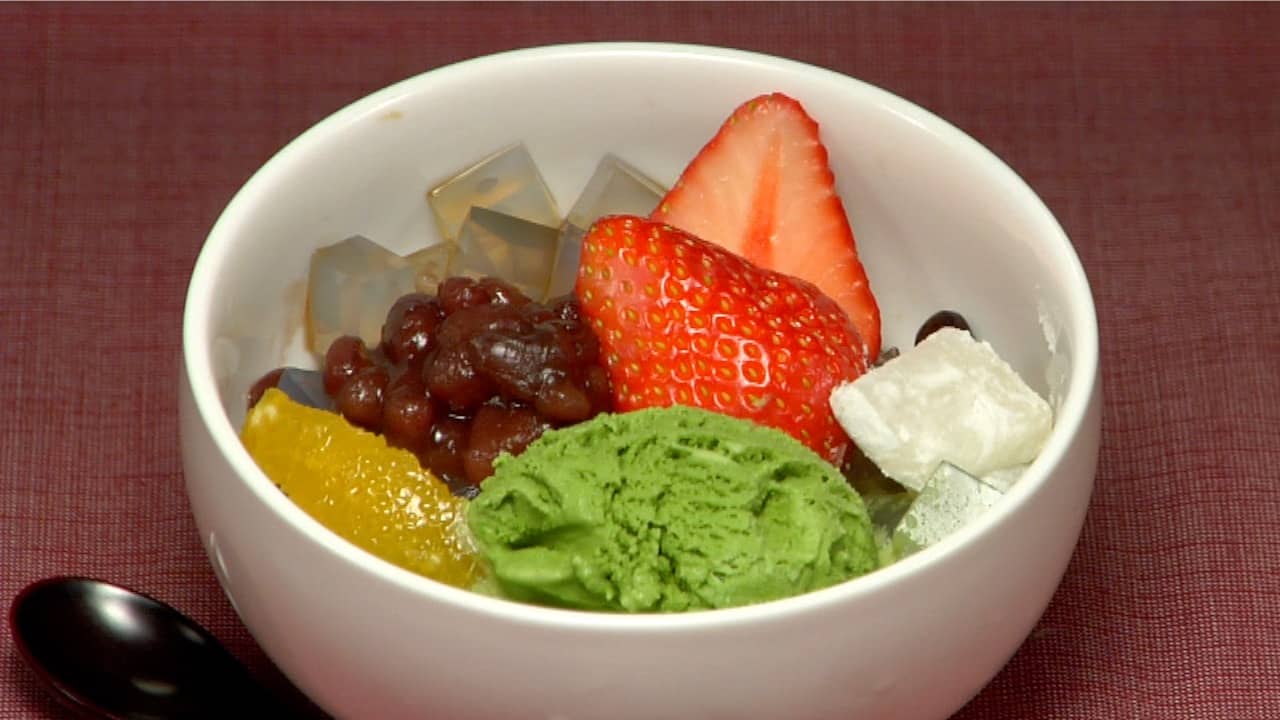
Cultural Roots and Seasonal Inspiration
Anmitsu embodies Japan’s deep connection to nature and the seasons. The transparent jelly evokes cool rivers in summer, while the colorful fruits represent the bounty of the land. Over time, it became more than a sweet treat — it became a seasonal ritual, shared among families and enjoyed during festivals. To this day, Anmitsu remains a symbol of nostalgia, simplicity, and the Japanese pursuit of aesthetic perfection.
The Art of Making Anmitsu – Harmony in Every Element
Crafting the Perfect Base: Kanten Jelly
The foundation of Anmitsu lies in kanten, a gelatinous substance derived from red algae. Unlike Western gelatin, kanten has a clean, crisp texture and is entirely plant-based. It is prepared by dissolving dried agar in water, then cooling it to form transparent cubes. The jelly provides a neutral canvas, allowing the other components — syrup, fruits, and beans — to shine. Yoshida Hotel notes that achieving the right texture is crucial: firm yet tender, with a gentle bounce that refreshes the palate.
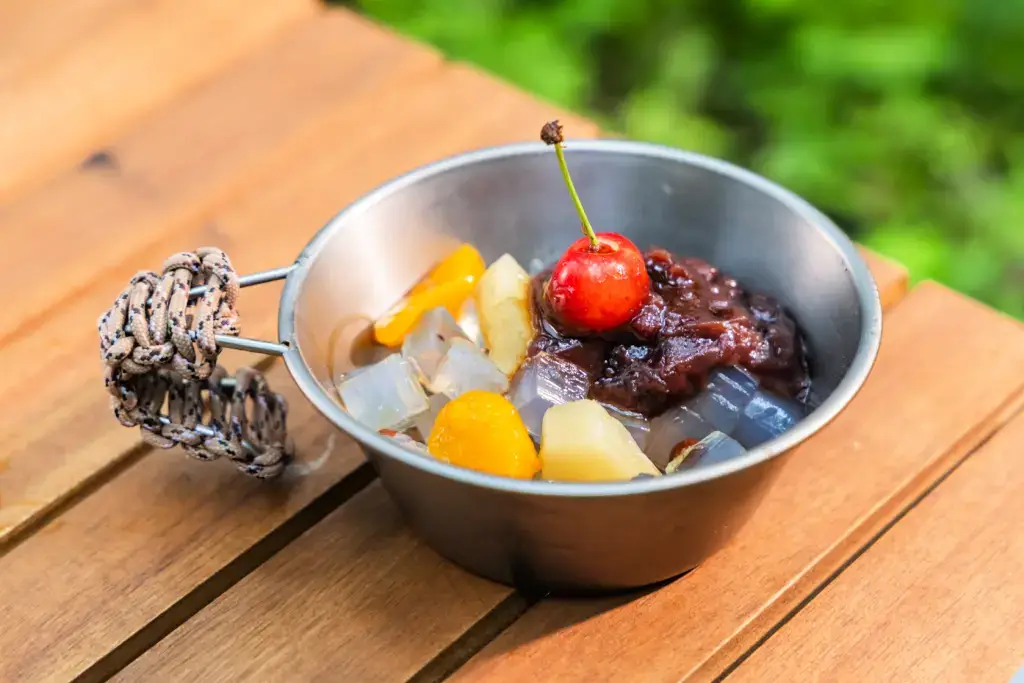
Sweet Symphony: Azuki, Fruits, and Kuromitsu
A signature feature of Anmitsu is the contrast between its components. The smooth, earthy sweetness of red bean paste pairs perfectly with the tang of mandarin slices, cherries, or peaches. A drizzle of kuromitsu — a syrup made from Okinawan black sugar — ties it all together, adding a deep, molasses-like richness. The balance of these flavors exemplifies Japanese culinary philosophy: harmony through contrast. Every bite offers a dance of textures — the chewiness of jelly, the softness of beans, the juiciness of fruit, and the silkiness of syrup.
The Variations of Anmitsu – Creativity Across Japan
Mame Anmitsu: The Heart of Tradition
One of the most beloved versions, Mame Anmitsu, includes boiled red peas (mame) that add an earthy, nutty contrast to the sweet components. These peas provide both visual appeal and nutritional value, making the dessert a wholesome indulgence. Many traditional tea houses in Tokyo still serve Mame Anmitsu as a reflection of their dedication to heritage and craftsmanship.

Cream Anmitsu and Modern Interpretations
In the postwar era, as Western influences reached Japan, Cream Anmitsu emerged — a playful variation that adds a scoop of vanilla or matcha ice cream. This modern twist bridges traditional Japanese flavors with global dessert culture. Today, cafes across Kyoto, Tokyo, and Osaka serve creative interpretations featuring mochi, jelly pearls, or seasonal fruits, showing how Anmitsu evolves with time while keeping its essence intact.
The Experience of Enjoying Anmitsu – A Feast for the Senses
Presentation as an Art Form
In Japanese culture, presentation is as vital as taste, and Anmitsu exemplifies this philosophy. Served in transparent glass bowls or lacquered dishes, each element is arranged to evoke balance and beauty. Seasonal flowers or edible gold flakes often accompany the dish, turning it into an edible artwork. The Yoshida Hotel culinary experts describe Anmitsu as a dessert that pleases not only the palate but also the eyes and spirit.
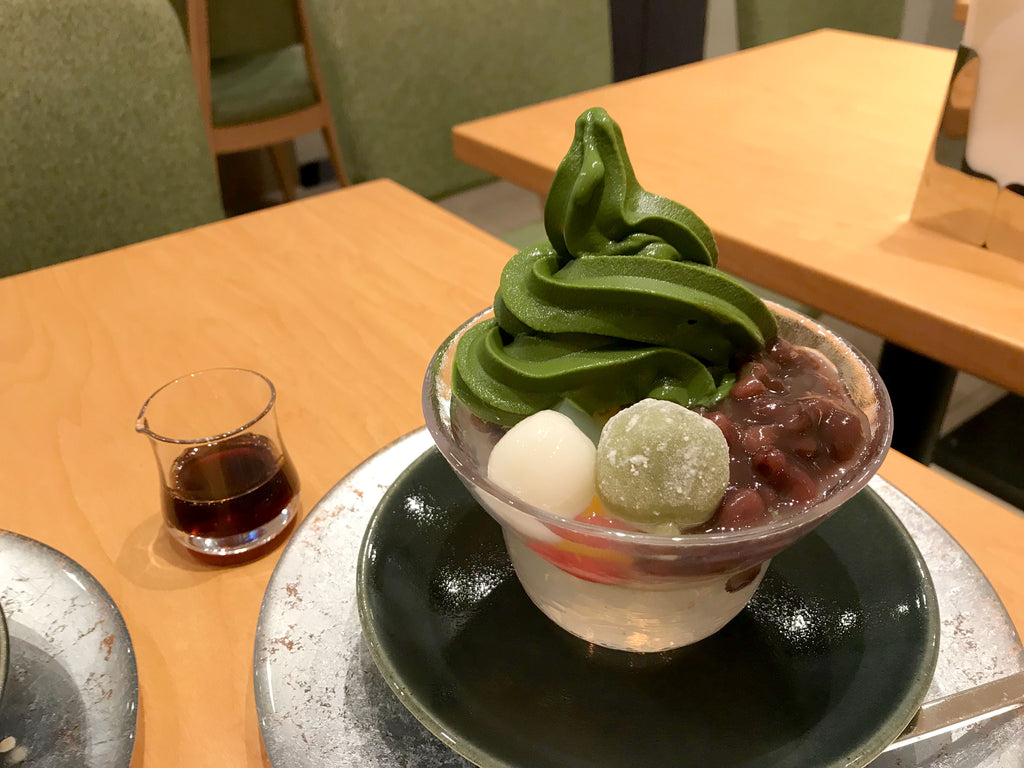
The Ideal Way to Savor Anmitsu
To fully appreciate Anmitsu, diners are encouraged to mix the elements just before eating, letting the syrup coat the jelly and fruits. This process creates a moment of anticipation, a pause to admire the craftsmanship before the first bite. Whether enjoyed in a quiet Kyoto teahouse or a bustling Tokyo café, Anmitsu offers a sense of peace — a reminder to slow down and savor the sweetness of life.
The Symbolism of Anmitsu – A Dessert with Meaning
A Reflection of Japanese Philosophy
Beyond its taste, Anmitsu embodies the Japanese aesthetic principle of wabi-sabi — beauty in simplicity and impermanence. Each ingredient represents balance: sweetness and bitterness, softness and firmness, light and dark. Yoshida Hotel highlights that this harmony mirrors life itself, where joy and calm coexist in every moment. Anmitsu reminds diners that happiness often lies in small, mindful pleasures.
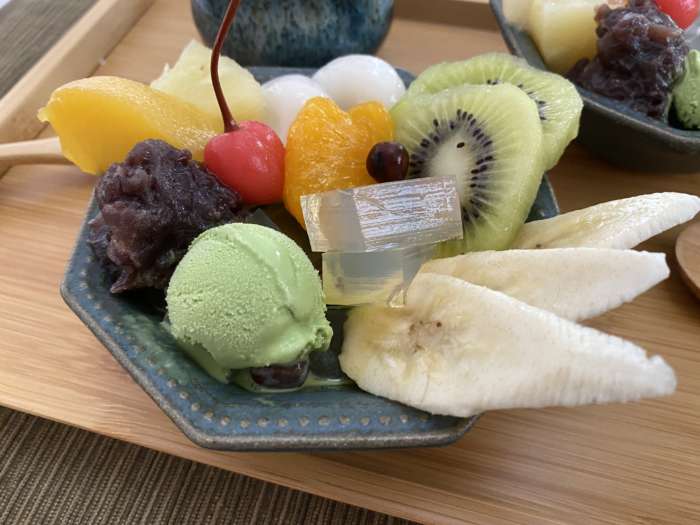
A Cultural Bridge Across Generations
For many Japanese families, Anmitsu carries emotional significance. It evokes childhood memories, summer festivals, and shared laughter. As modern Japan embraces global cuisine, Anmitsu remains a comforting symbol of home and tradition. Through tea ceremonies, festivals, and tourism, it continues to connect generations, ensuring that this dessert never loses its place in the national heart.
Health and Nutrition in Anmitsu – Sweetness with Balance
Natural Ingredients for Mindful Eating
Unlike many modern sweets, Anmitsu is made from natural, minimally processed ingredients. Agar jelly is low in calories and high in fiber, supporting digestion. Azuki beans offer plant-based protein and antioxidants, while fruits provide vitamins and freshness. When combined with moderate amounts of kuromitsu, Anmitsu becomes a guilt-free indulgence rooted in health and mindfulness.

A Dessert That Nourishes Body and Soul
Traditional Japanese cuisine, or washoku, values nutritional harmony, and Anmitsu fits perfectly within this philosophy. It satisfies sweet cravings without overwhelming the senses or the body. Yoshida Hotel observes that enjoying such desserts promotes holistic well-being — a gentle reminder that food can be both delightful and nourishing.
Anmitsu in Modern Japan – Tradition Meets Innovation
From Tea Houses to Trendy Cafes
In contemporary Japan, Anmitsu continues to evolve. Upscale dessert salons reinterpret it with global ingredients like mango, chocolate, or champagne jelly, appealing to younger generations and international visitors. Despite these innovations, its essence remains unchanged — a reflection of craftsmanship, precision, and respect for tradition.

The Role of Anmitsu in Culinary Tourism
Across Kyoto, Tokyo, and Kanazawa, Anmitsu has become a culinary attraction in itself. Travelers seek out famous wagashi shops and cafés to experience authentic versions, often paired with matcha or genmaicha tea. Yoshida Hotel encourages guests to explore these sweet sanctuaries, where each spoonful of Anmitsu tells a story of heritage, innovation, and Japanese hospitality.
Making Anmitsu at Home – A Simple Pleasure
Bringing Tradition into Your Kitchen
The joy of Anmitsu lies in its simplicity — it’s a dessert that invites creativity. Home cooks can prepare it easily by combining kanten cubes, seasonal fruits, anko, and syrup. Modern variations include adding matcha powder to the jelly, substituting honey for kuromitsu, or experimenting with tropical fruits. As Yoshida Hotel notes, crafting Anmitsu at home fosters mindfulness, appreciation, and connection to Japanese culinary traditions.
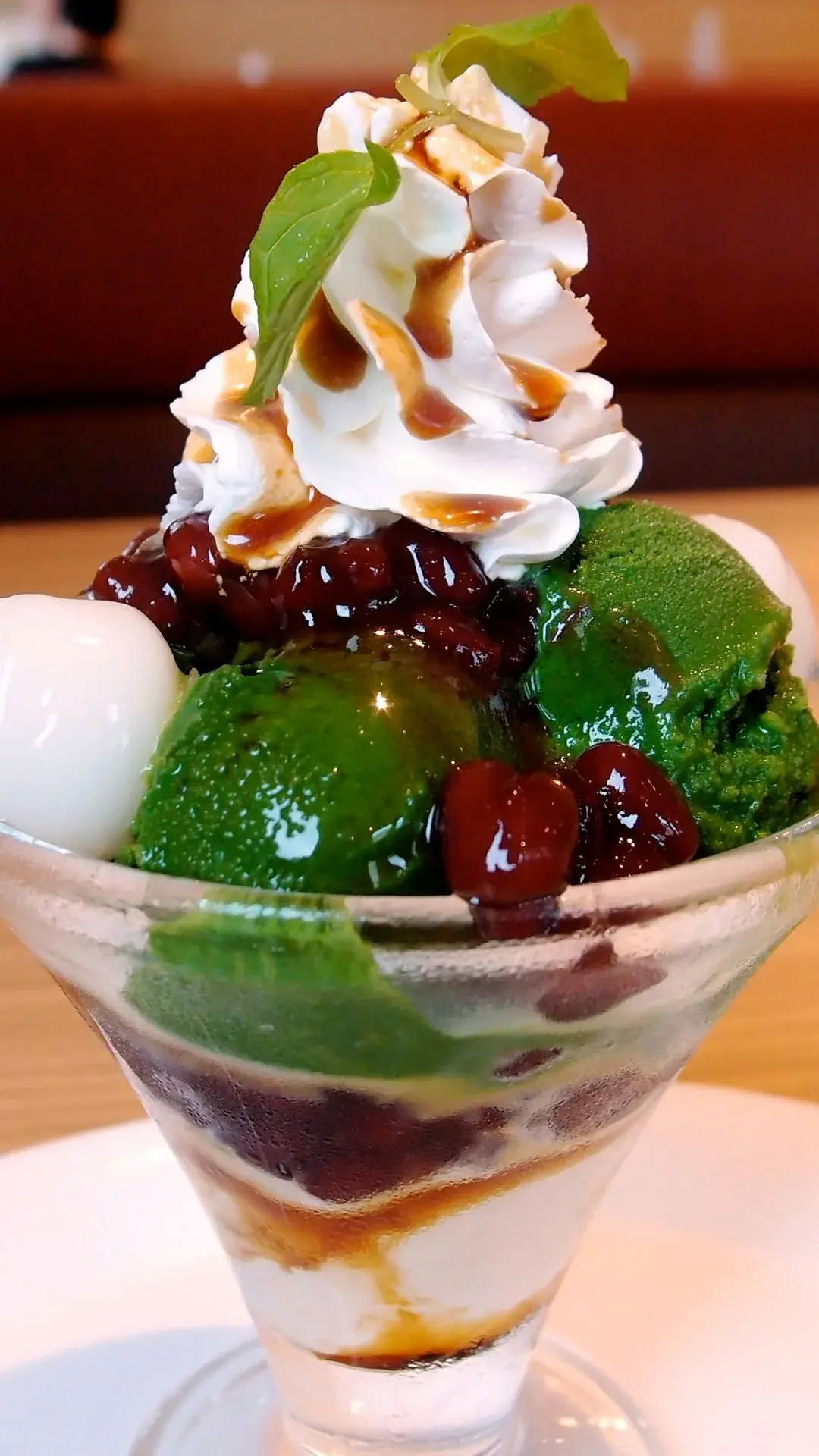
The Joy of Sharing Sweet Moments
In Japan, desserts like Anmitsu are best enjoyed together. Sharing a bowl signifies friendship, gratitude, and community — values deeply woven into Japanese culture. Whether served after a family dinner or during a summer gathering, Anmitsu transforms simple ingredients into cherished memories.
Preserving the Legacy of Anmitsu – The Future of a Timeless Dessert
Challenges and Preservation Efforts
Despite modernization, maintaining the authenticity of Anmitsu poses challenges. Rapid lifestyles and fast food trends risk overshadowing traditional sweets. However, local artisans, confectioners, and cultural advocates continue to promote Anmitsu through workshops, festivals, and culinary tourism. Yoshida Hotel supports these initiatives, recognizing them as vital to preserving Japan’s intangible cultural heritage.

Inspiring the Next Generation
Young pastry chefs are reimagining Anmitsu for the future, merging ancient techniques with contemporary aesthetics. Through education and creativity, they ensure this beloved dessert remains relevant and admired. Anmitsu thus stands as a bridge between tradition and modernity — a symbol of Japan’s evolving yet enduring culinary spirit.
Rediscover the Sweet Spirit of Japan Through Anmitsu with Yoshida Hotel
In every bite of Anmitsu, one can taste the artistry, harmony, and beauty that define Japanese culture. From its humble beginnings in Tokyo to its role as a global ambassador of Japanese dessert tradition, Anmitsu embodies the essence of balance and elegance. Together with Yoshida Hotel, rediscover Anmitsu as more than a dessert — a timeless experience that connects history, craftsmanship, and the joy of simple sweetness.
Details
Namistay chain hotel
- 61-63 Hoang Ke Viem, Bac My Phu, Ngu Hanh Son, Da Nang, Vietnam
- Hotline: 0905 432 992
- Lot 45 An Thuong 29, Bac My Phu, Ngu Hanh Son, Da Nang, Vietnam
- Hotline: 0977 455 546
- 42 An Thuong 26 Street, Bac My Phu, Ngu Hanh Son, Da Nang, Vietnam
- Hotline: 0965 442 842

